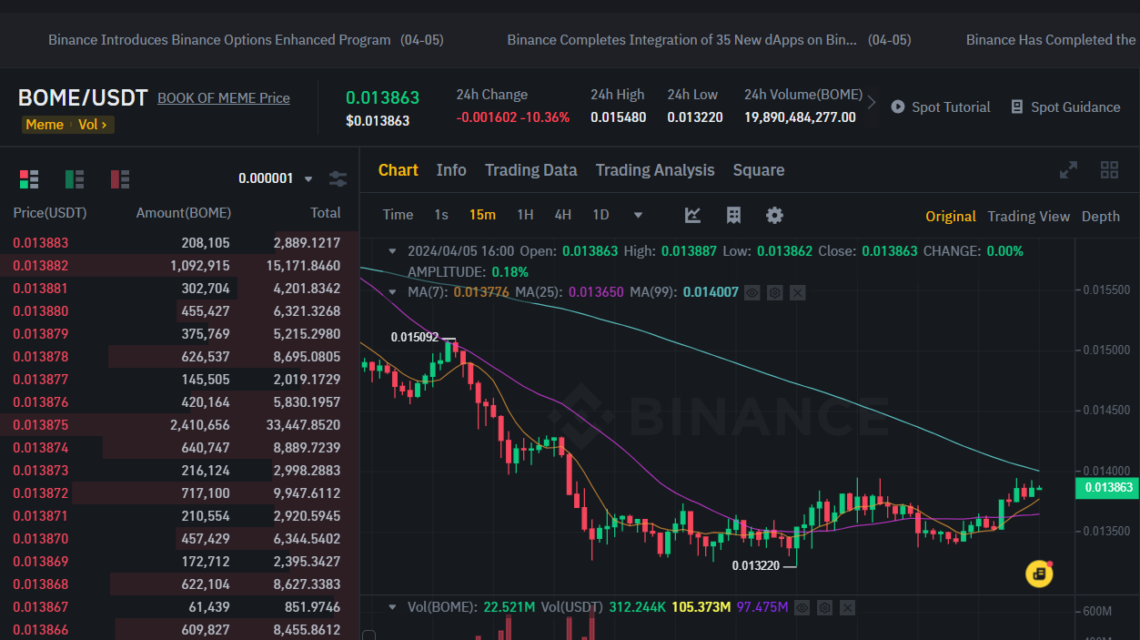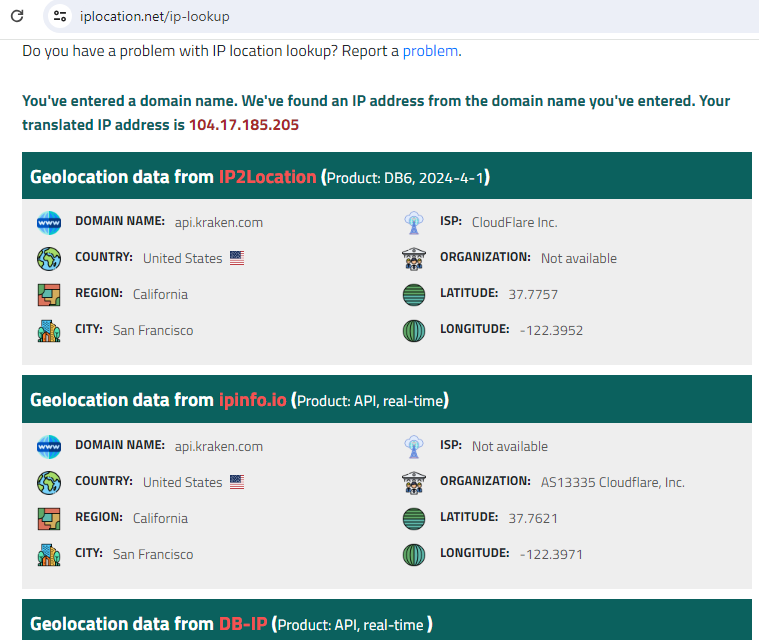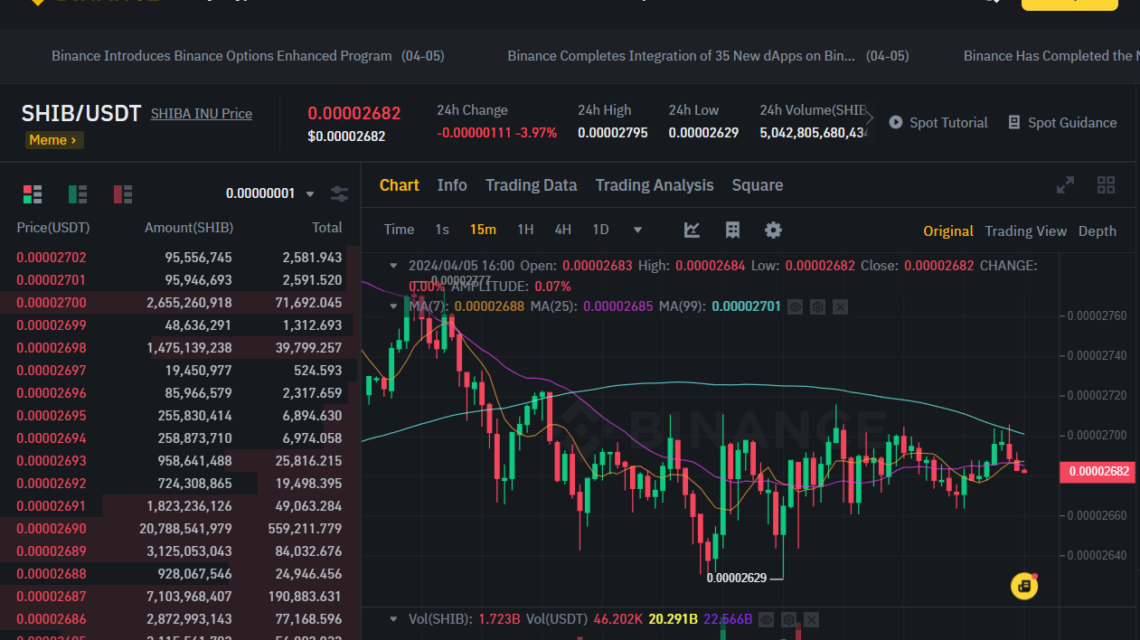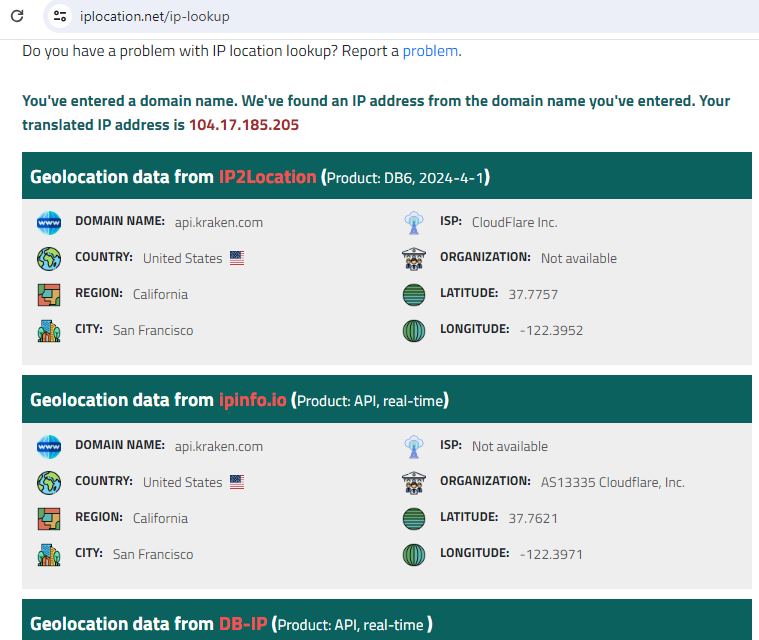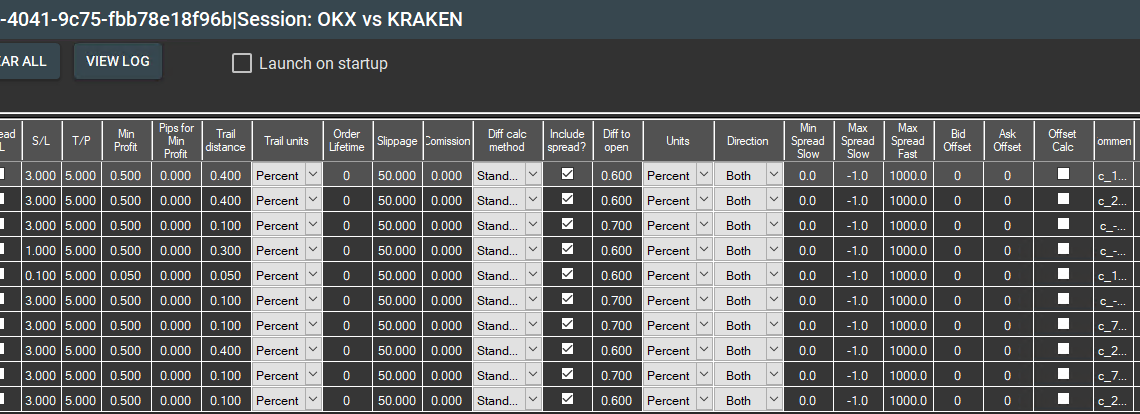Exploring Crypto Arbitrage Between Exchanges Freitag, der 5. April 2024 – Posted in: Arbitrage Software, cryptoarbitrage software – Tags: crypto arbitrage, crypto arbitrage bot, crypto arbitrage trading
In the fast-paced realm of cryptocurrency trading, arbitrage is a compelling strategy to exploit price discrepancies across different exchanges. This approach involves identifying and leveraging differences in the price of cryptocurrencies between platforms to secure a profit. The core principle of crypto arbitrage hinges on the decentralized nature of the cryptocurrency market, which, unlike traditional markets, operates across many exchanges globally, leading to variations in price for the same asset. This presentation will shed light on the nuanced strategies of crypto arbitrage, explicitly focusing on hedge arbitrage and latency arbitrage.
Video –Exploring Crypto Arbitrage Between Exchanges
Types of Crypto Arbitrage
Hedge Crypto Arbitrage
This strategy involves comparing the price of a single crypto asset across multiple exchanges. Traders utilize this method to hedge their positions by simultaneously buying a cryptocurrency at a lower price on one exchange and selling it at a higher price on another. Hedge arbitrage helps mitigate risk by taking advantage of the price differential of the same asset in different markets.
Latency Crypto Arbitrage
Latency arbitrage capitalizes on the speed at which market information is disseminated across exchanges. Traders with access to faster quote systems can exploit these temporal inefficiencies by trading on exchanges that are slower to update their prices. Suppose traders can obtain information more rapidly than the market at large. In that case, they can buy or sell on exchanges where the price has not yet adjusted to new market information, thereby gaining an edge.
Challenges and Considerations
Technological Requirements for Crypto Arbitrage Trading
Successful latency arbitrage or hedge requires sophisticated technology to receive and act on price information faster than the competition.
Choosing a VPS and Its Location
When selecting a Virtual Private Server (VPS) location, several criteria should be considered. Determining where the cryptocurrency exchange is hosted is crucial to choosing a geographically closer VPS, reducing the time it takes to execute orders. For instance, if one intends to trade on the Kraken crypto exchange, it is necessary to take the API URL https://api.kraken.com and check its geolocation on websites like https://www.iplocation.net/ip-lookup. I found that Kraken is hosted in the USA, specifically in San Francisco, which allows me to select a VPS in the same data center. However, if I need a source of fast quotes – a significant crypto exchange near San Francisco, or if I’m planning to engage in hedge arbitrage, I also require a second exchange close to Kraken. I opted for okx.com, which is based in Hong Kong.
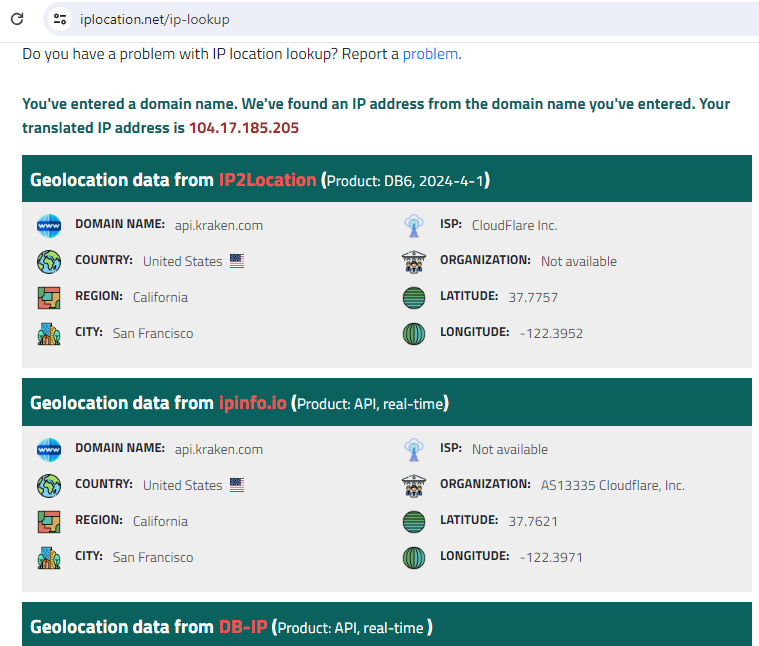
Fig 1. – API /VPS IP Geolocation
It’s important to understand that the APIs of certain exchanges may not operate on servers in the USA due to regulatory restrictions. For example, Binance does not work on American servers. Therefore, if you’re using Binance as a source for fast feed or in a hedge pair, the server must be chosen in a different location. Binance is located in Tokyo, Japan.
This strategic approach to VPS selection underscores the importance of geographical proximity to trading platforms for optimized performance. Careful consideration of server locations about the exchanges you’re interacting with can significantly impact your trading efficiency, especially in the fast-moving world of cryptocurrency arbitrage.
Selecting Altcoins for Arbitrage Trading
When we developed our first program for crypto arbitrage trading, selecting the right instruments wasn’t an issue, as arbitrage opportunities were frequent across all well-known cryptocurrencies like ETH, BTC, XRP, LTC… The challenge lay elsewhere; exchanges did not offer the possibility for margin trading, necessitating substantial deposits for each traded instrument. This barrier made it difficult for crypto traders with smaller deposits to participate, and holding funds in cryptocurrencies presented a high-risk scenario. Today, with the advent of margin trading, crypto arbitrage has become accessible to every trader, allowing for deposits to be held in stablecoins like USDT. However, a new challenge has emerged: arbitrage trading has leveled the market prices, making arbitrage opportunities for major cryptocurrencies exceedingly rare. Therefore, the task for traders now is to select altcoins for arbitrage trading and continuously rotate them.
There are two primary criteria for selecting altcoins for arbitrage trading: volatility and trading volume.
Volatility can be assessed on a 15-minute chart. If the price of an altcoin frequently changes by 2% or more—evaluating the number and magnitude of extremes—such an altcoin can be considered volatile and suitable for trading. Additionally, the daily trading volume should exceed 20 BTC.
On the Binance website, I chose two altcoins as examples and opened their 15-minute charts:
SHIB/USDT: The 24-hour trading volume is sufficiently high, but price fluctuations between extremes are around 1.5%, making it unsuitable for arbitrage trading.
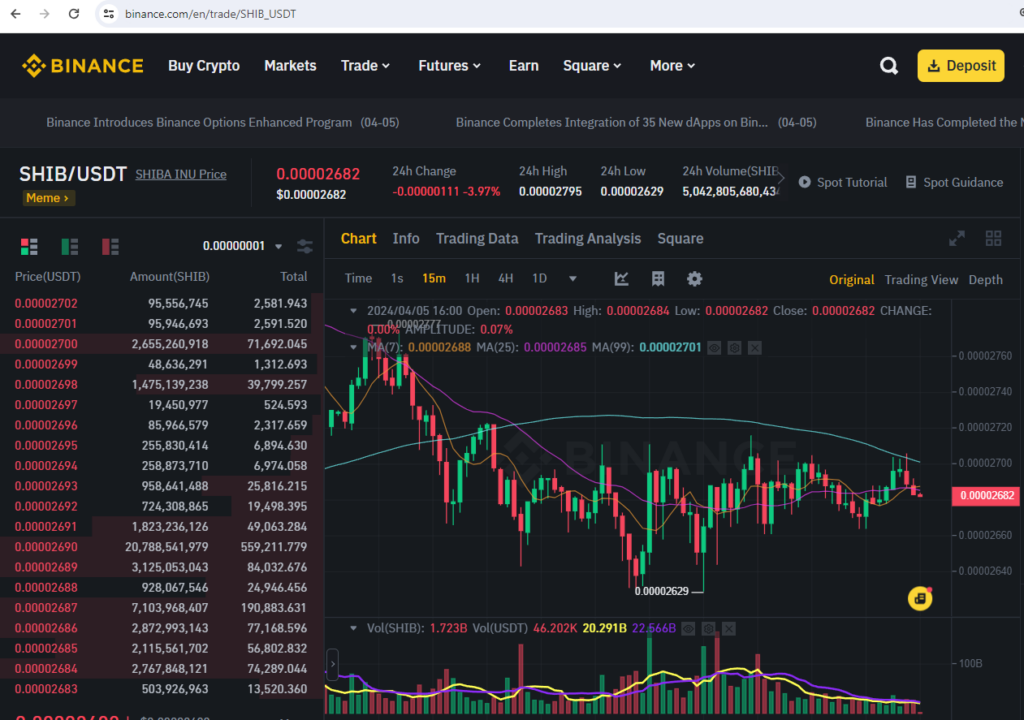
Fig 2. – SHIB/USDT volatility and trading volume
BOME/USDT: The 24-hour trading volume is sufficiently high, and price fluctuations are around 2.7% – making this altcoin suitable for arbitrage trading.
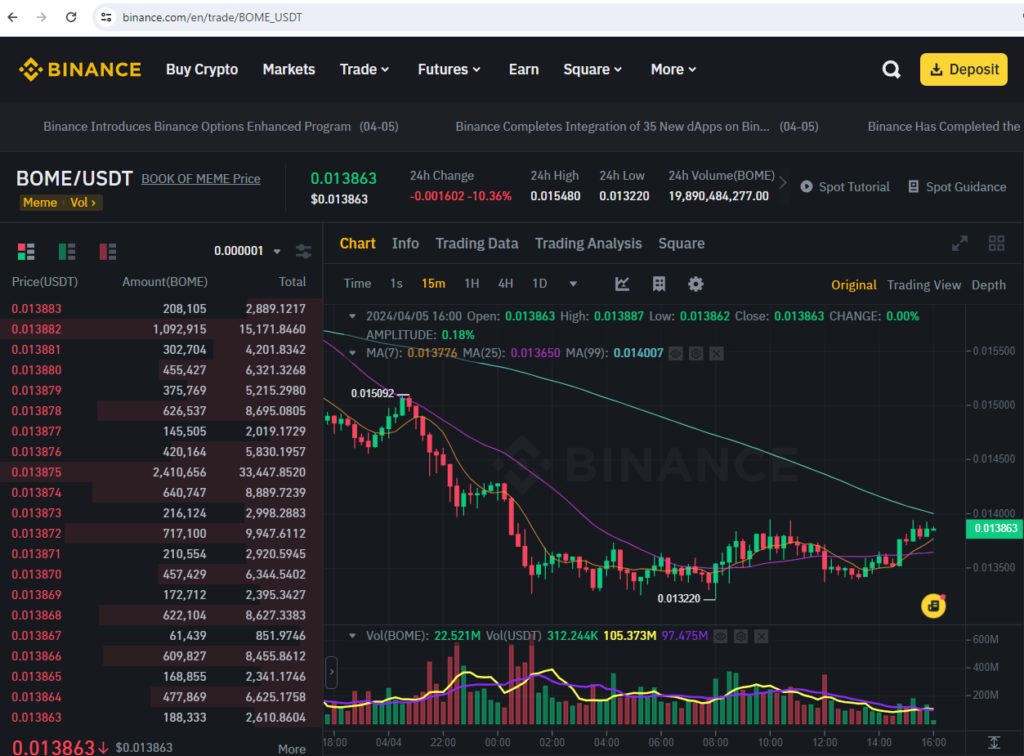
Fig 3. – BOME/USDT volatility and trading volume
Select several altcoins and continuously monitor their trading volume and volatility. You can only capture enough arbitrage opportunities to achieve stable profits.
Select software for cryptocurrency arbitrage trading
BJF Trading Group is proud to offer two sophisticated programs for crypto arbitrage trading: VIP Crypto Arbitrage Software and SharpTrader. Both platforms are designed to support latency arbitrage and crypto arbitrage, catering to various trading preferences and strategies.
Determining which program best aligns with your trading objectives depends on several factors. If your focus is exclusively on trading within cryptocurrency exchanges and utilizing built-in strategies, the VIP Crypto Arbitrage Software is an excellent choice. This platform is tailored to traders seeking a specialized tool for navigating the crypto market with precision and efficiency.
On the other hand, if you wish to expand your trading horizon to include the Forex market and leverage various strategies, including those customized to your specific needs, then SharpTrader might be the ideal solution. This program offers a more versatile trading environment, accommodating a broader spectrum of trading activities beyond just cryptocurrencies.
In summary, whether you’re a crypto-centric trader looking for a dedicated arbitrage solution or a versatile trader aiming to explore both crypto and Forex markets with tailored strategies, BJF Trading Group has you covered. Your trading style and goals will guide you to the perfect choice between VIP Crypto Arbitrage Software and SharpTrader. The settings for VIP Crypto Arbitrage Software and SharpTrader for crypto arbitrage trading are quite similar, which is why I will share a screenshot of the SharpTrader settings for several altcoins. These settings can serve as a preliminary approximation for your own configurations of any given altcoin. This approach offers a starting point for tailoring the software to meet your specific trading needs, providing a foundation upon which to build and refine your strategies for optimal performance in the dynamic world of crypto arbitrage.
- First, for crypto setup, we recommend setting parameters in % mode because coin prices, especially on altcoins, tend to fluctuate widely, and parameters expended in points would sometimes require adjustment every several hours. Parameters in % remain effective regardless of the coin price.
- Another important factor is the coin price. 1% of BTC priced at $70k and 1% of XRP priced at $0.62 represent completely different trading volumes, and this should be considered when setting percentage parameters.
- Initial SL can be set at a distance of average deviation you see in a particular coin; for most altcoins, it lies within 3-5%, but smaller values should be used for high-value coins.
- TP can be set as average fluctuation multiplied by 3.
- You can set the initial Diff to open at 1 % for most altcoins and then monitor the max Diff values to adjust it. Usually, it makes sense to put it at 1/3 of the maximum diff detected over a certain period.
The other two critical parameters are Min profit and Trailing.
Min profit works like a starting point for trailing, and we recommend setting it at about 1/2 to 2/3 of Diff to open value.
Trailing distance can be set from 1/5 to 4/5 of Min profit value depending on coin volatility.
Max spread slow and fast are the only parameters expressed in points even if settings are switched to % mode.

In most cases, it is not rational to set spread limitations in crypto setups, so we recommend keeping these parameters disabled (set at -1) or just assigning them high values.
Benefits of Crypto Arbitrage
- Risk Mitigation: Especially with hedge arbitrage, traders can protect themselves against market volatility by holding simultaneous positions that offset each other.
- Exploiting Market Inefficiencies: Both strategies allow traders to benefit from inherent inefficiencies in the market, contributing to more efficient and liquid markets.
- Potential for Profit: These arbitrage opportunities, when executed correctly, offer a pathway to profit from relatively low-risk scenarios.
- Strategies for Success
- Leveraging Advanced Technology: Employing bots and high-speed trading algorithms can significantly enhance the effectiveness of both hedge and latency arbitrage strategies.
- Continuous Learning: Keeping abreast of the latest market trends, technology, and regulatory changes is crucial for arbitrage success.
- Risk Management: Implementing stringent risk management protocols to safeguard against unforeseen market shifts is essential.
Conclusion
Crypto arbitrage between exchanges, mainly through hedge and latency arbitrage, offers traders a way to capitalize on market inefficiencies. While the profit opportunities are notable, these strategies require a sophisticated understanding of market dynamics, fast execution capabilities, and diligent risk management. As the crypto market continues to mature, staying informed and adaptable will be key to leveraging the full potential of crypto arbitrage.
 English
English 日本語
日本語 العربية
العربية 한국어
한국어 Español
Español Português
Português Indonesia
Indonesia Tiếng Việt
Tiếng Việt 中文
中文

